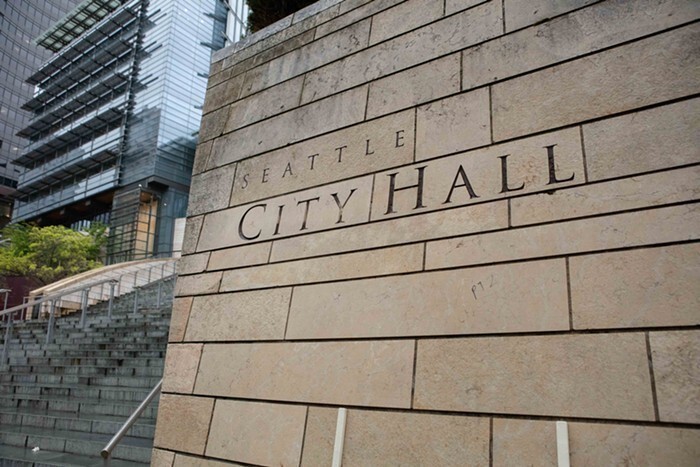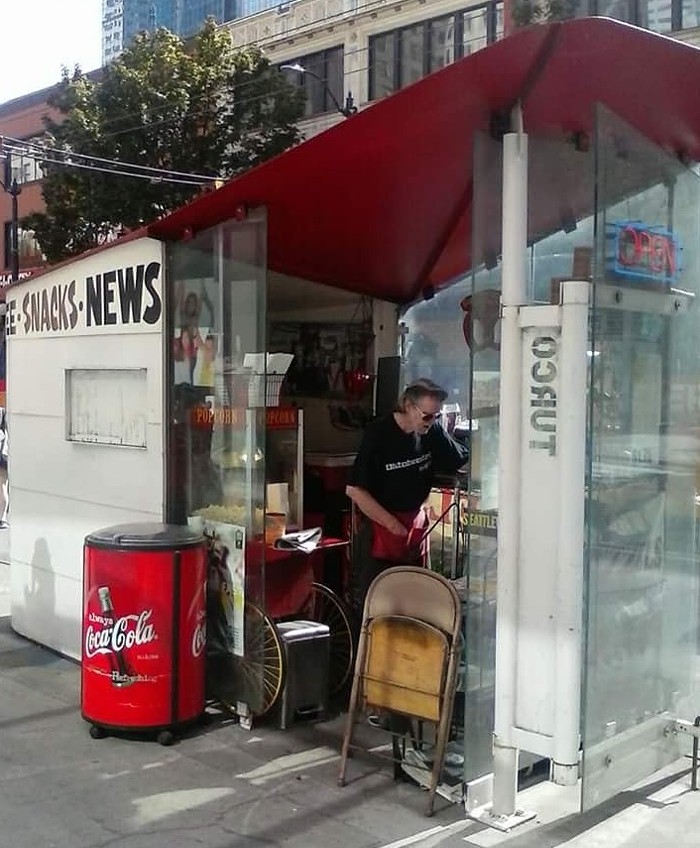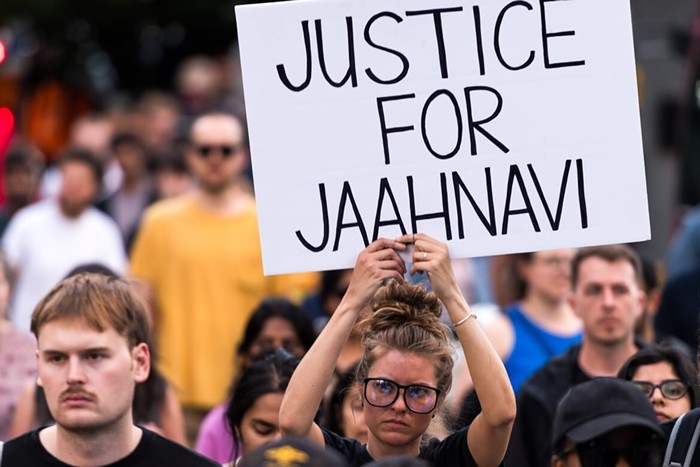Mayor Greg Nickels's Nightlife Task Force held a public meeting Monday, October 30, but you wouldn't know it from looking around the room: All media, except print reporters, were barred from entering the Norman B. Rice Conference Room adjacent to the mayor's office.
Asked afterward why the mayor's office had prohibited cameras from creating any record of the proceedings (even two Seattle Channel cameras bolted to the ceiling were out of commission), mayoral spokesman Marty McOmber said the ban was "an effort to keep people on track... We're creating an environment conducive to getting through the work in a productive and timely fashion."
The "work" in question was a presentation by mayoral and Department of Executive Administration (DEA) staffers of the mayor's new nightlife regulations. It was also the final meeting of the city's nightlife task force; any further revisions to the legislation will have to come from the city council.
The members, arranged around four heavy wooden conference tables, included club owners, neighborhood residents, and other business representatives, along with mayoral staffers Jordan Royer and James Keblas (head of the Mayor's Office of Film and Music) and DEA Director Ken Nakatsu.
Although the mayor's office has touted the new rules as a "significant improvement" on the old legislation, they don't do much to satisfy club owners who were outright appalled by the restrictiveness of the original proposal ["Nickels Proposes Anti-Nightlife Legislation," by Erica C. Barnett, July 13]. In the new version: Club owners are no longer required to "prevent" crimes inside their own and adjacent premises; instead, they are now required to "take all reasonable steps to prevent [violent] criminal activity" on their property and in "impacted public areas." (The new rules also require club owners to "immediately report" any confirmed or suspected illegal activity to police.) Nor do they have to staff a phone line at all hours; instead, emergency calls must be returned within a day.
The definition of "impacted public areas," which club owners must police for littering and illegal behavior, has been changed from "public property adjacent to the nightclub premises where either patrons or prospective patrons gather"—an almost impossibly vague standard—to areas within 50 feet of a property. That's better than the old definition, but still too large; as owners of clubs in Pioneer Square have pointed out, the public areas "impacted" by each club will frequently overlap, forcing club owners to patrol the sidewalk in front of each other's properties.
The noise standard has been loosened a little, from noise "audible to a person of normal hearing" inside nearby buildings to "amplified sound" that can be heard for more than a minute by a person standing in a nearby building or in a public space 75 feet away. That prevents neighbors from complaining when people stand outside and talk, for example, but doesn't satisfy club owners like Showbox co-owner Jeff Steichen, who worries that the standard may be too restrictive.
Finally, the definition of "nightlife businesses" has been vastly expanded to include most bars as well as clubs—something residents of neighborhoods like Fremont, where most of the noise comes from bars, not nightclubs, requested.
Club owners and neighborhood residents on the advisory board seemed more resigned than enthusiastic about the new regulations, which Steichen called "one more layer of restrictions that doesn't really do anything except give the city another tool to shut businesses down." The new rules include almost nothing, Steichen noted, to help nightlife thrive in Seattle—something Nickels has repeatedly promised.
City officials hedged, meanwhile, about whether they would resume the hated "good-neighbor agreements," legally binding documents that required bar and club owners to abide by a list of rules that varied widely from one establishment to another. 


















